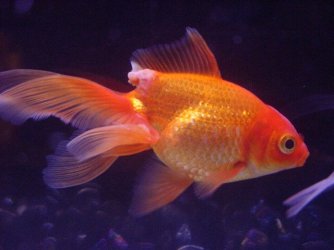I am attaching a photo of a goldfish that I found with the same problem mine has -- note the large white lesion near the fin. My goldfish has had this for a short while but it seems to be getting larger in the past week. He does not appear to be sick, but I am concerned that it is growing.
What is it?
How should I treat it?
I am not able to find an answer on all the sites on the internet that I have searched.
Thanks, Pam
What is it?
How should I treat it?
I am not able to find an answer on all the sites on the internet that I have searched.
Thanks, Pam


